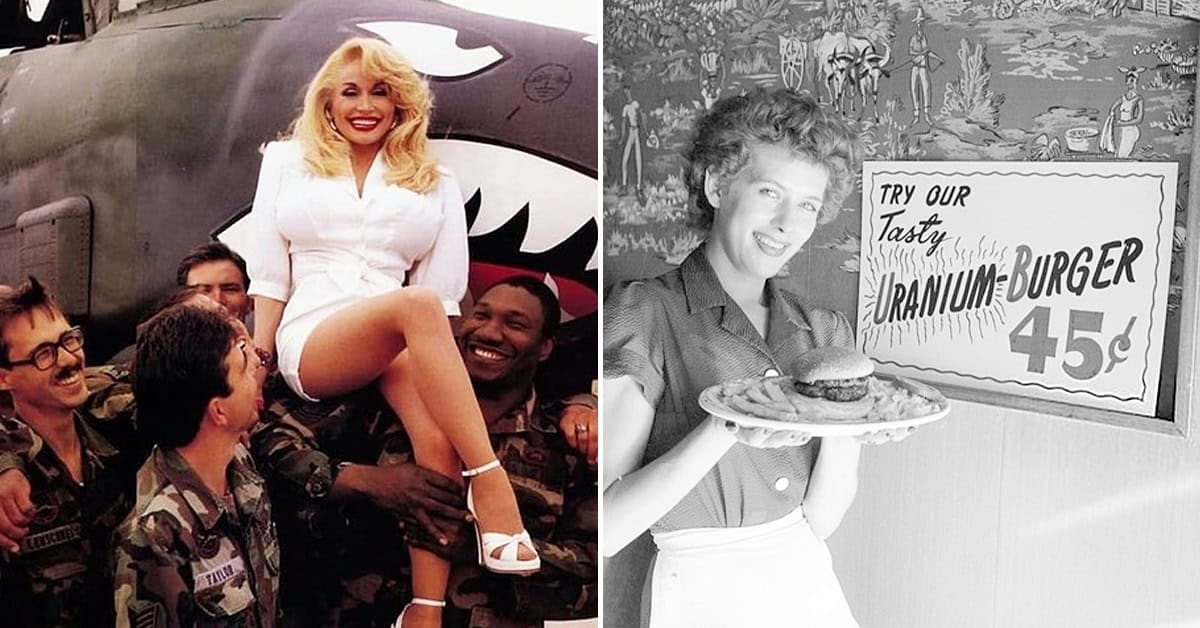25 Cool Historical Photos That Capture Real Life, Not Just History
I’ve always loved old photos. Not the stiff portraits, but the candid ones. The weird, blurry, completely unposed moments that somehow feel more honest than anything you’d find in a textbook.
Sometimes it’s a soldier goofing off before battle. Other times, it’s a mom gripping her son like she’s trying to memorize him. The details don’t always matter. What sticks with me is how real it all feels.
I came across these on one of my favorite Instagram accounts, @historycoolkids, and couldn’t stop scrolling.
These aren’t just vintage pictures. They’re tiny portals into lives that came and went before we ever got here.
So here are the most fascinating historical photos I’ve come across. Raw, strange, human, and impossible to forget.
1. Even Civil War Soldiers Had Jokes
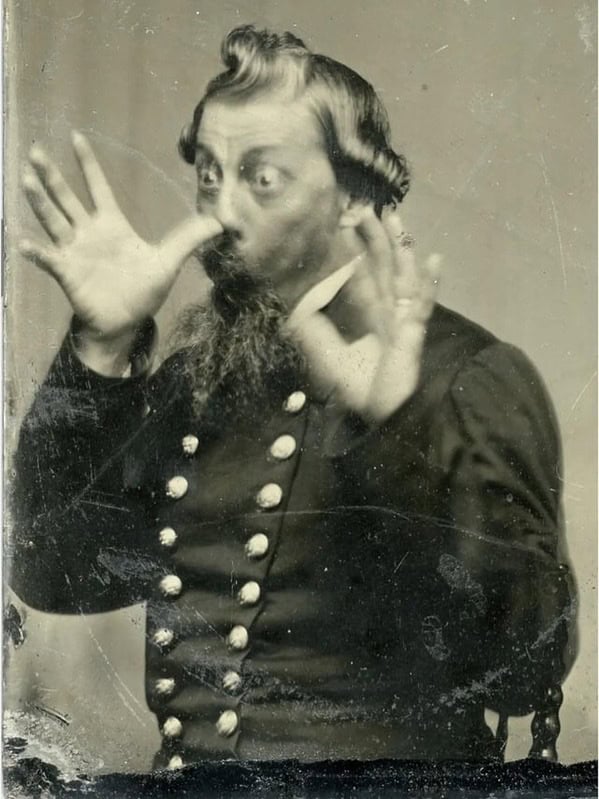
American Civil War soldier clowning around for the camera, 1863.
The Union officer poses for a quarter-plate tintype while making the classic “thumb to nose” gesture—an old sign of mockery or playful defiance. The gesture, which involves placing the thumb on the tip of the nose and wiggling the fingers, was already recognized in 19th-century American culture as a way to express mild insult or comic disdain.
An 1863 Semi-Weekly Wisconsin newspaper even gave instructions on how to do it properly: “Put thumb to nose, and gyrate the extended fingers for a moment,” showing that even in an era of rigid photographic poses, humor still slipped through the lens.
This same mocking move endured into the 20th century and was famously revived by the Three Stooges, who often used it in their slapstick routines to taunt each other or their on-screen foes.
2. The Uranium Burger Was Pure 1950s Hype
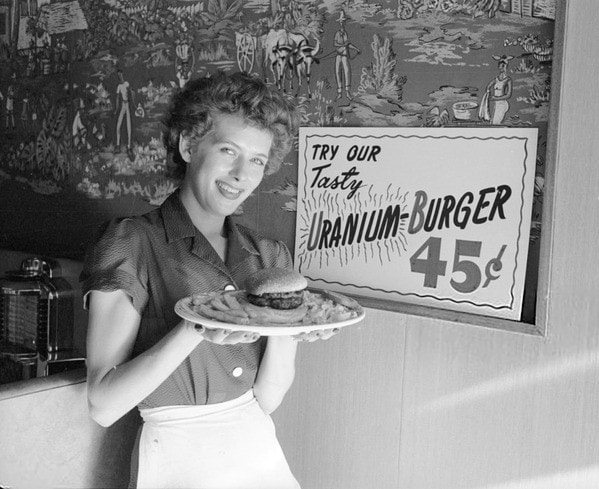
In 1954, at the height of the uranium mining boom in the American Southwest, a restaurant in Salt Lake City, Utah, introduced a novelty menu item called the “uranium burger.”
Some reports and anecdotes from the time suggest that it was served on a toasted bun and wrapped in bright foil, mimicking the look of metal or radiation shielding. The burger did not contain any actual uranium. It was common in the 1950s to use nuclear lingo to create a futuristic or edgy appeal—other menu items across the country included things like “atomic chili” or “plutonium pie.”
3. Playgrounds Used to Be Made of Steel and Concrete
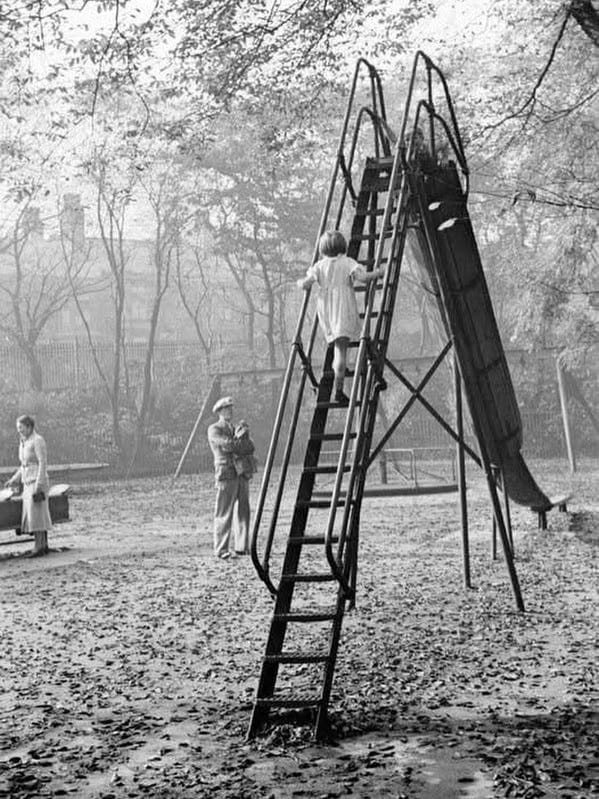
Before the era of safety mats, rubber mulch, and molded plastic, playgrounds in the 1950s were built with steel, wood, and concrete, offering a very different kind of childhood thrill.
Towering metal slides, dizzying merry-go-rounds, and monkey bars set in asphalt or packed dirt were common sights. Children climbed, ran, and tumbled without the safety standards we expect today, often barefoot or in simple sneakers. These playgrounds were both exhilarating and unforgiving, forming part of a postwar culture that valued independence, resilience, and outdoor play.
Photo by Bolton Library and Museum
4. The Day It Snowed in Miami
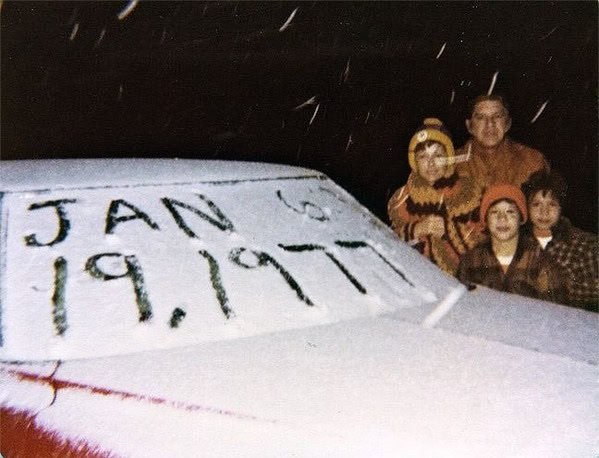
On January 19, 1977, Miami, Florida, experienced a rare and historic weather event: it snowed for the first and only time in the city’s recorded history.
Early that morning, residents were stunned to see flurries drifting through the air, something practically unimaginable in subtropical South Florida.
The snow was so unusual that many Miamians who had never seen snow before tried to catch the flakes or gather them up, but the snowfall was very light and melted quickly on the ground. The cold wave responsible for the snow was part of a severe Arctic outbreak that swept down into the southeastern United States, bringing freezing temperatures as far south as the Bahamas, where sleet was also reported.
5. Even Einstein Needed Help With Foot Pain
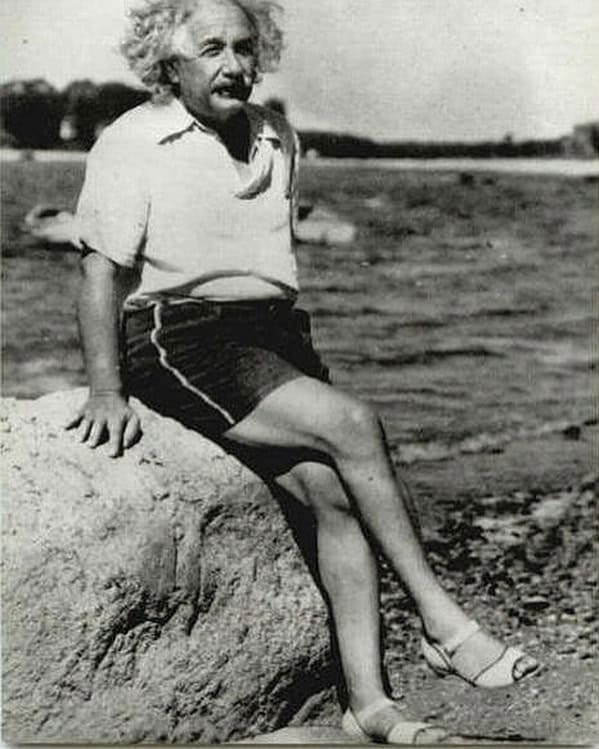
Einstein had problems with his feet.
In 1952, shoe store owner Peter Hulit got an urgent call from Einstein’s housekeeper. She told him that Einstein was in pain and that he could not find a comfortable pair of shoes.
When Hulit made the house call, he recalled, “This magnificent guy came down the stairs… smoking his pipe, and he whipped this folded piece of paper out of his pocket and said, ‘Zis is ze problem, Mr. Hulit.’”
Hulit opened the piece of paper.
Einstein had made a sketch of the source of his problem. He was feeling pain on the outer edge of his feet and his big toe. He concluded that he needed a shoe that had more space around the top half of his feet with even distribution of pressure.
Hulit bent down and examined Einstein’s feet and noted that “they were tender like a child’s, that skin texture; they were soft and easy.” After a moment, Hulit looked up and explained to Einstein that “What really happened is that he had gained some weight in his older age and his feet changed size.”
Hulit made some measurements and fitted Einstein with a pair of roomy black dress shoes. “The man had never had a pair of black shoes in his life… but I knew he was due to appear at an event in New York City pretty soon. I wasn’t going to let him go in brown shoes or sneakers. Even if he was Albert Einstein.”
Source: https://content.time.com/time/subscriber/article/0,33009,1050325,00.html
6. Times Square Erupted With Joy, 1945
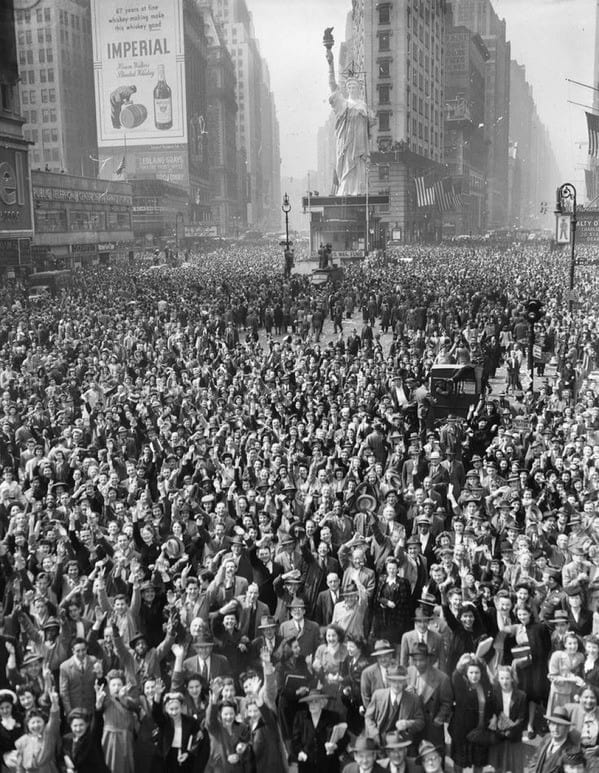
On May 7, 1945, as news broke of Germany’s surrender, Times Square in New York City quickly became the epicenter of spontaneous celebration.
By mid-morning, around 25,000 people had already gathered, and as the day went on, the crowd swelled dramatically. Streets were closed to traffic as people poured in from all directions, waving flags, embracing strangers, and climbing onto vehicles and lampposts in a shared moment of relief and triumph. By evening, the crowd had grown to an estimated 750,000, filling the square and surrounding blocks.
A few months later, on August 14, 1945, an estimated two million people flooded the streets of New York City, with Times Square serving as the emotional and symbolic heart of the celebration. The news of Japan’s surrender, marking the official end of World War II, prompted one of the largest public gatherings in the city’s history.
7. Miss Piggy Visits a Hospital, 1979 Was Wild
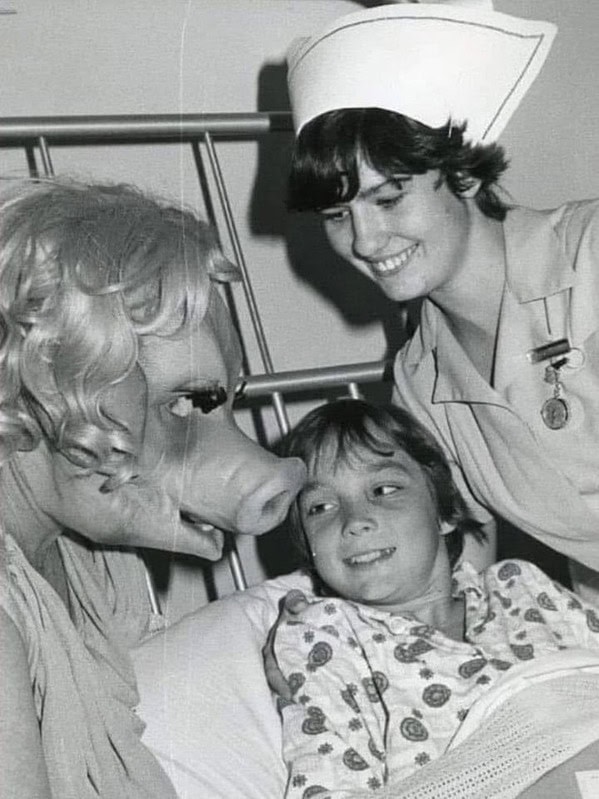
On June 21, 1979 Miss Piggy of ‘The Muppet Show’ made a special appearance in the Children’s Ward at Bulli Hospital. She brought smiles to nurse Jackie Milbourne and patient Alan Burlin (age 12).
I thought this was an episode from the Twilight Zone. People were just built different back then…
8. 45-Year-Old Dolly Parton Boosting Morale in ’91
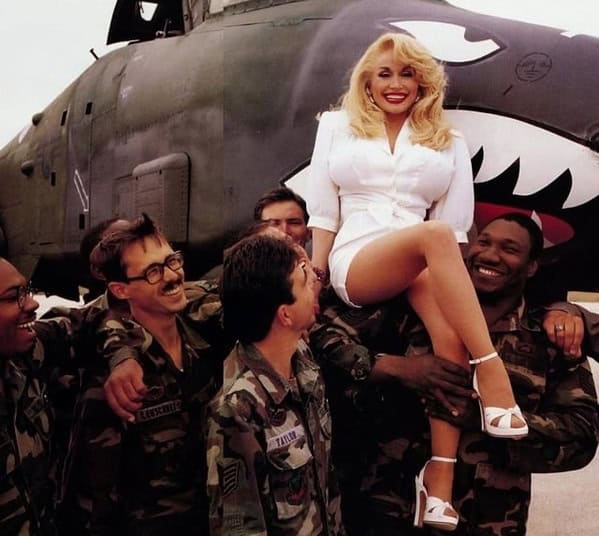
45-year-old Dolly Parton with soldiers during Operation Desert Storm, 1991.
After Iraq, led by Saddam Hussein, invaded and annexed Kuwait on August 2, 1990, a U.S.-led coalition quickly formed under the United Nations to demand Iraq’s withdrawal. This initial phase, known as Operation Desert Shield, focused on building up massive coalition forces in Saudi Arabia to defend it from a potential Iraqi attack and to prepare for liberating Kuwait if diplomacy failed.
When Saddam Hussein refused to pull out, the coalition launched Operation Desert Storm on January 17, 1991. The operation began with a massive aerial and missile bombardment that targeted Iraqi command centers, air defenses, supply lines, and infrastructure. This air campaign lasted for about five weeks and is remembered for its extensive use of precision-guided munitions and 24-hour news coverage, which brought the conflict into homes worldwide in an unprecedented way.
The ground assault phase began on February 24, 1991, and lasted only 100 hours before President George H. W. Bush declared a ceasefire on February 28, 1991. Coalition forces, led by the U.S., liberated Kuwait swiftly and pushed Iraqi forces back into Iraq, inflicting heavy losses while sustaining relatively few casualties themselves compared to previous major wars.
9. Fishing by Light in Postwar Hawaii
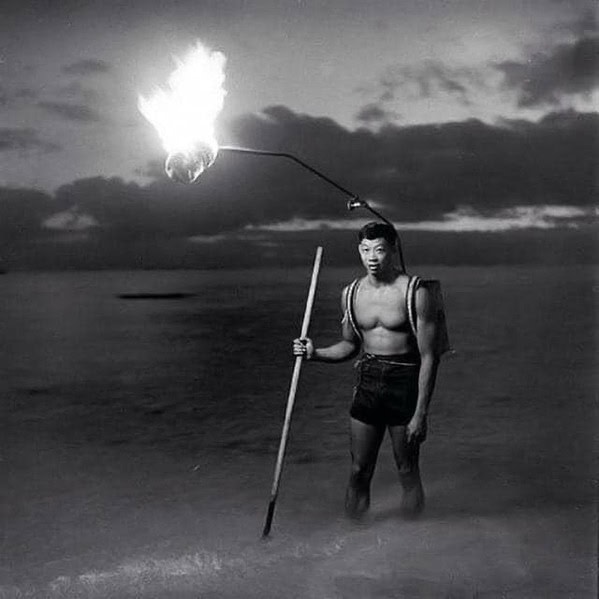
“Night fishing in Hawaii, 1948.
I think he learned this technique from the Anglerfish…
Speaking of the Anglerfish, when a tiny male anglerfish finds a much larger female, he bites into her body (often her belly) and releases an enzyme that fuses his mouth to her skin. Over time, his tissues and circulatory system merge with hers. He draws nutrients directly from her blood, like a living parasite.
In return, the male’s own organs shrink. His eyes and fins degenerate because he no longer needs to hunt or see—he solely exists to fertilize her eggs whenever she’s ready. Some females carry multiple tiny males attached to their bodies.”
10. A Mother’s Goodbye Before the Great War
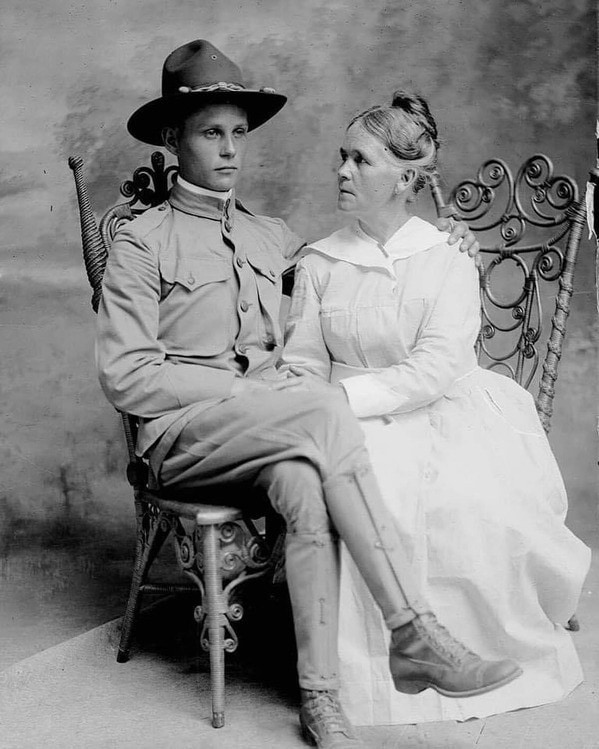
A young soldier and his mother share a moment before he gets shipped off to fight in World War 1 in 1917.
When I first saw this photo, I only had one question on my mind—did he make it back? Considering how many young men died fighting in the war, I was very doubtful. His mother seems to be memorizing every part of his face, expecting him to never return.
I did some digging and was pleasantly surprised to find out that he survived the war! His name was Joseph Hafen and he was born in Salt Lake County, Utah in 1895. He would have been 22 years old when he went to fight in Europe. His mother’s name was Thora Marionnette Twede Hafen and she was born in 1861, making her approximately 56 years old when this photo was taken.
If you swipe left you’ll see another photo of Joseph after he returned home from the war in 1920. He’s sitting down in the center of the photo, wearing his uniform. His mother’s hand is on his shoulder. She would pass away later that same year.
Joseph married and had 9 children. He started a tomato plant business and also worked in construction and mining. He lived until 1976, passing away at the age of 81.
11. The World’s Tallest Teen, Standing With Family
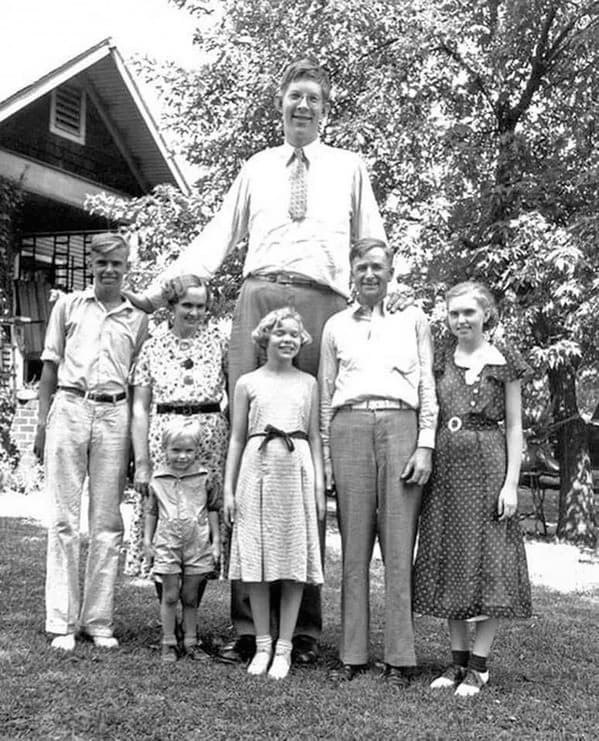
12. Why Hamburg Modified This Landmark
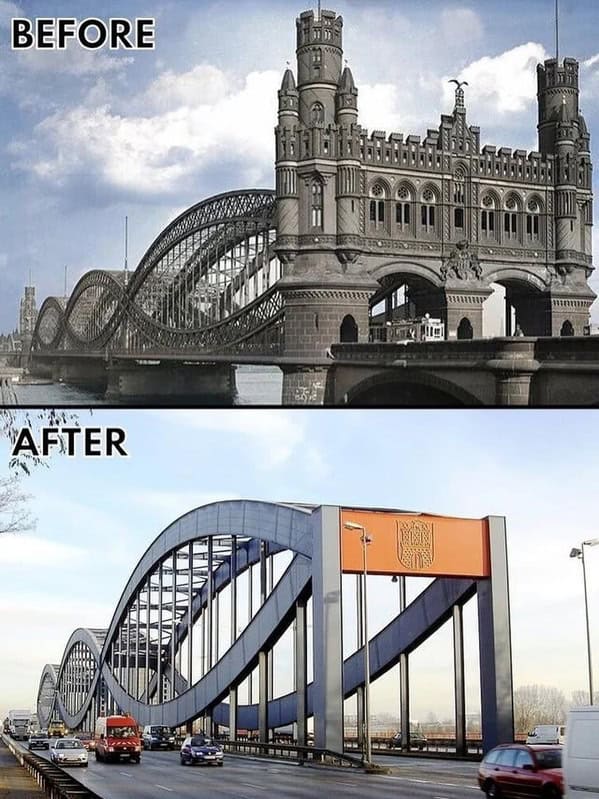
Neue Elbbrücke Bridge in Hamburg, Germany.
The original design was completed in 1887 and featured elaborate neo-Gothic portals that were later removed to meet the demands of modern traffic and larger ships passing underneath. As Hamburg grew into an even busier port city and cars, trams, and trucks got larger and heavier, the original bridge became a bottleneck.
By the mid-20th century, it was clear the bridge needed to handle more vehicles, taller vehicles, and allow more clearance for river traffic. So, during renovations in the 1950s and 1960s, many decorative architectural features—including the stone towers and turrets—were removed to widen the roadways and increase the clearance height.
In essence, the bridge was stripped of its ornate elements to favor function over form, prioritizing traffic flow, safety, and efficiency in a rapidly industrializing and modernizing Hamburg.
13. 118 Years, 6 Generations, 1 Remarkable Life
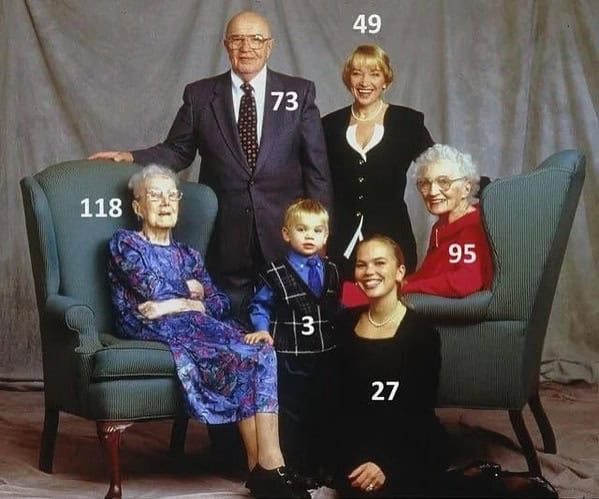
A then 118-year-old Sarah Knauss posing for a family photo, United States, 1998.
Knauss, born in Pennsylvania in 1880, is the oldest person ever from the United States. She lived through profound changes, from the horse-and-buggy era to the dawn of the internet, and outlived seven major wars and twenty-three American presidents.
Known for her calm and gentle demeanor, Sarah attributed her longevity to a tranquil disposition and an aversion to worry. She enjoyed simple pleasures like watching golf on television, doing needlepoint, and snacking on chocolates and potato chips—famously disliking vegetables. When told she was the world’s oldest living person, her reaction was a bemused “So what?”.
She passed away in December 1999, just a day before the new millennium, leaving behind a family that spanned six generations.
14. Brooklyn’s Watermelon Champ, 1935
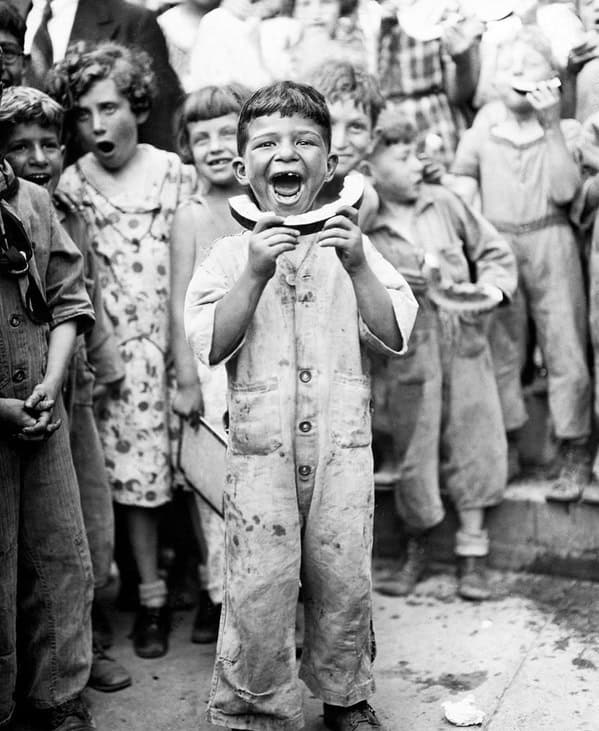
Champion watermelon eater at 4th of July celebration, Brooklyn, 1935.
15. When a Full Tank Didn’t Hurt
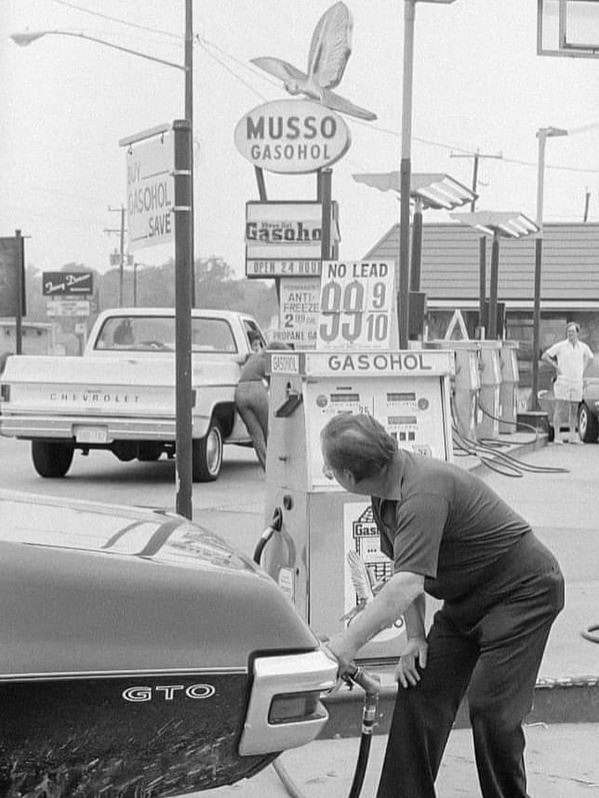
Filling up the GTO with $.99 unleaded gasoline in 1979.
That car probably got less than 12 mpg and when adjusted for inflation, that $.99 would be approximately $4.50 today.
16. Thousands of Pages, Assembled One by One
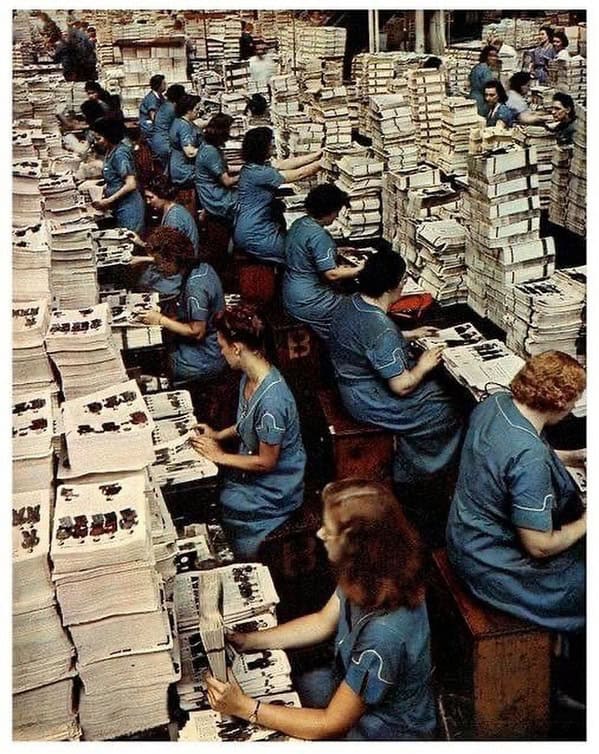
The Sears Catalog used to be assembled by hand, 1940s.
When Sears began in the late 19th century, its mail-order business was revolutionary but relied on thousands of clerks, printers, and warehouse workers to keep it running.
Workers manually compiled, printed, bound, and packaged these massive catalogs, which were well over 1,000 pages filled with everything from clothing and furniture to entire house kits.
Early on, page layouts were set by hand with movable type, illustrations were engraved or lithographed, and each catalog was physically assembled at printing plants, then shipped by rail across the country.
Even order fulfillment was manual: warehouse clerks would walk the aisles with order slips, picking items by hand before packing and shipping them. Over time, new technologies like linotype machines, conveyor systems, and mechanized presses streamlined parts of the process, but the catalog still relied heavily on human labor until modern automation and the eventual decline of the big book catalogs in the late 20th century.
17. A Miner’s Family, Struggling to Get By
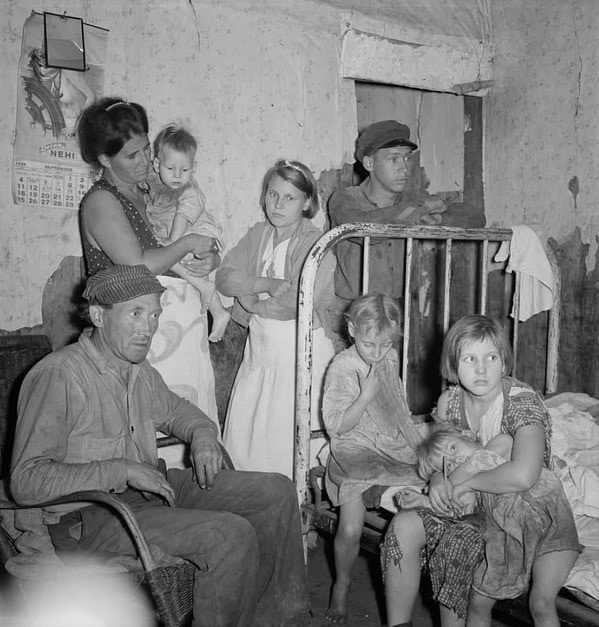
Original caption: Coal miner and wife and children. He has been injured in mines four times. Since last year, has been refused work, now is on relief. Pursglove, Scotts Run, West Virginia, 1938.
18. A Relationship Shaped by History
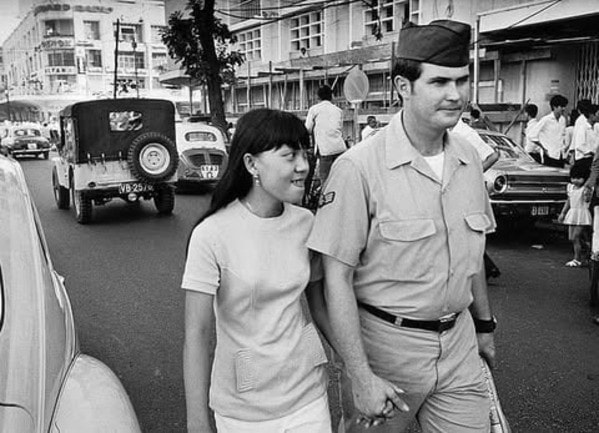
A US airman and his girlfriend in Saigon, 1971.
By 1971, American involvement in Vietnam was beginning to wind down under the policy of “Vietnamization,” which aimed to transfer combat roles to South Vietnamese forces while gradually withdrawing U.S. troops.
Despite the drawdown, tens of thousands of American servicemen, including airmen, soldiers, and support personnel, remained stationed in and around Saigon, which was the capital of South Vietnam and the hub of U.S. military and diplomatic operations.
Many relationships formed between American servicemen and Vietnamese women during the war years. Some were fleeting romances, while others led to marriage, immigration, and families caught between two worlds.
19. La Plata, Argentina: The Most Organized City You’ve Never Heard Of

La Plata, Argentina is considered one of the best planned cities built in the world.
Founded in 1882, La Plata was designed from scratch by the Argentine engineer and architect Pedro Benoit as the first planned capital city in Argentina after Buenos Aires became an autonomous federal district.
Its layout is a striking demonstration of Enlightenment ideals of rationality and order: a perfect square grid intersected by diagonal avenues that cut through the regular blocks, forming diamond-shaped plazas at the intersections. Every few blocks, there is a green plaza or park, creating a rhythm of urban open spaces. Streets are numbered systematically, making navigation unusually straightforward.
At the center sits the Plaza Moreno, a vast civic square flanked by two monumental structures: the neo-Gothic La Plata Cathedral—one of the largest in the Americas —and the city hall (Palacio Municipal).
20. When Lufthansa Served Draft Beer at 30,000 Feet

In the 1960s, Lufthansa served draft beer on their flights.
The airline installed specially designed beer kegs with pressurization systems to handle the changes in cabin pressure. The idea was to give passengers a more authentic German beer experience, pouring fresh draft beer at 30,000 feet.
However, it didn’t last long. The logistics were complicated—kegs were heavy, took up precious space, and maintaining the right pressure for proper flow was tricky in a pressurized cabin. Eventually, practical considerations won out, and they returned to bottled beer instead.
21. The Priest Who Chose Sacrifice Over Survival
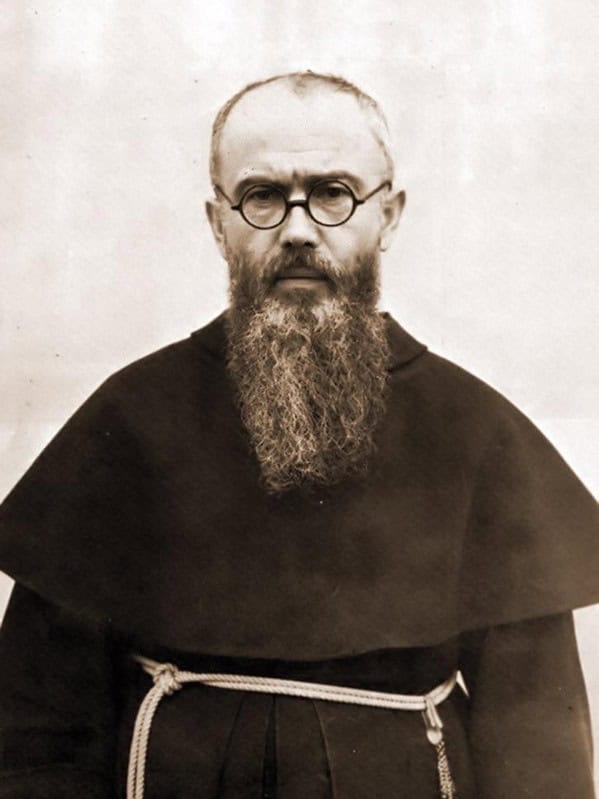
During the German occupation of Poland, Maximilian Kolbe (a Polish Franciscan friar) gave shelter to refugees, including many Jewish people. He was arrested by the Gestapo in February 1941 and eventually sent to Auschwitz concentration camp.
At the end of July, after a prisoner escaped, the SS selected ten men at random to be starved as punishment. One of them, Franciszek Gajowniczek, cried out for his wife and children. Kolbe stepped forward and volunteered to take his place. Kolbe and the other men were locked in a starvation cell.
He supported the condemned men with prayers and hymns until, after two weeks, he was the last one left alive. He was executed with a lethal injection on August 14, 1941. He was said to have calmly raised his left arm and accept his fate. Gajowniczek survived Auschwitz and later imprisonment in other camps, ultimately living until 1995.
After the war, he dedicated much of his life to telling the story of Kolbe’s sacrifice. He traveled widely, speaking at churches and events, and was present at Kolbe’s beatification in 1971 and his canonization in 1982 by Pope John Paul II.
He often said, “So long as I have breath in my lungs, I consider it my duty to tell people about the heroic act of love by Maximilian Kolbe.”
22. Soapmaking the Hard Way, 1923
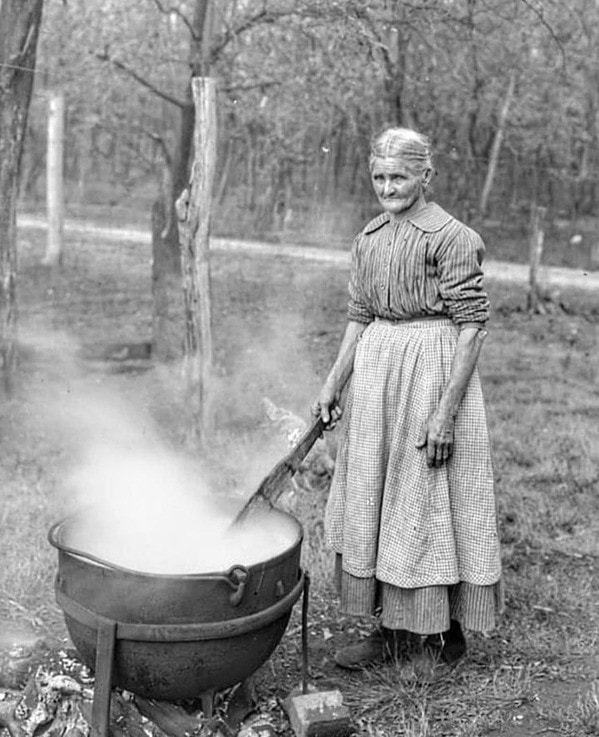
An elderly woman making a batch of lye soap in the yard in Spencer County, Indiana, 1923.
Lye soap made by combining animal fat (like leftover bacon grease or lard) with lye (which people often made themselves by leaching water through hardwood ashes), was a staple in rural households.
It cleaned everything: laundry, dishes, floors, and people. Buying soap from a store was an option for some, but in farming communities like Spencer County, which was and still is a rural area in southern Indiana, many families continued making it at home well into the 20th century.
The process wasn’t easy or without risk. Lye is caustic and could badly burn skin if handled carelessly. Making soap often meant stirring a big kettle over an outdoor fire for hours, testing its consistency by feel and eye, then pouring it into molds or pans to cure. Elderly women like her would have learned the skill from mothers and grandmothers, passing down not just a recipe but the knowledge of how to stretch every resource a household had…
23. He Skied Through Landmines and Snowdrifts to Stay Alive
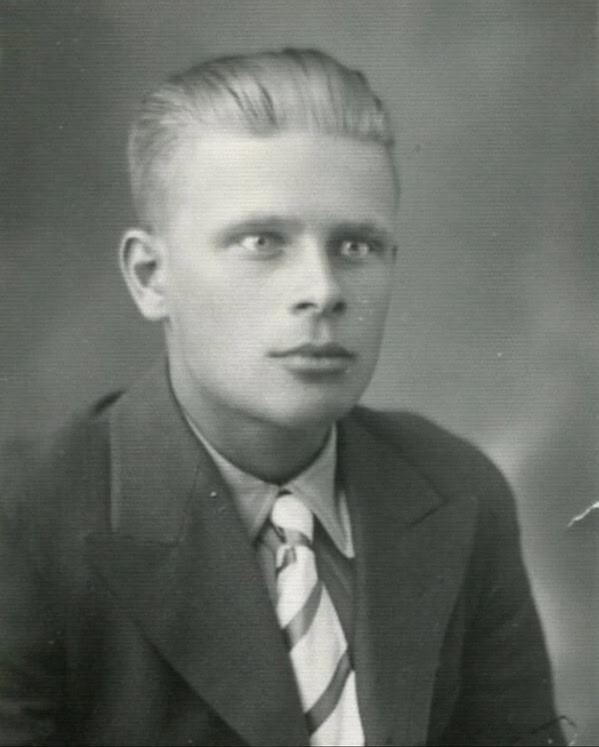
On March 18, 1944, 27-year-old Aimo Koivunen and his Finnish ski unit were patrolling Lapland (northernmost region of Finland that is part of the Arctic Circle) when they came under attack by Soviet forces.
They soon found themselves surrounded by the numerically superior Soviets and had no choice but to retreat as quickly as possible through deep, untouched snow. Koivunen led the way, but soon found himself physically drained.
He then remembered that he was carrying a package of Pervitin, an earlier version of crystal meth that was used as a stimulant during World War 2. Popping one of these pills was equivalent to drinking several cups of coffee.
It just so happened that Koivunen was carrying the entire supply of Pervitin for his unit. Koivunen struggled to pop a single pill into his mouth because he was wearing thick gloves and was still skiing like a madman to escape the Soviets. Since he could not risk slowing down, he decided to consume all 30 pills of pure methamphetamine. He noticed the effects right away. His exhaustion faded and he began to ski faster and faster.
The Soviets were unable to keep up and his own unit disappeared behind him. Suddenly, Koivunen’s vision began to blur and he lost all consciousness. When he awoke, he was completely alone and had covered 100 kilometers (62 miles). He was still high with no food or ammunition.
His only chance of survival was to keep skiing. He had no idea where his unit was, but he knew the Soviets were still on his trail. During the next few days, Koivunen came across Soviet forces several times, but managed to escape each time. He even skied over a landmine, which exploded and left him badly injured and delirious, but not enough to kill him. Drifting in and out of consciousness, Koivunen knew that he would quickly perish if he fell asleep for too long in sub-zero temperatures. He needed to keep skiing.
Koivunen managed to finally make it back to safety after having traveled a total of 400 kilometers (250 miles). He weighed only 94 pounds, and his heart rate was still pumping at 200 beats per minute. He lived until the age of 71 and passed away in 1989.
24. Sweden’s Best-Dressed Trio, 1880s
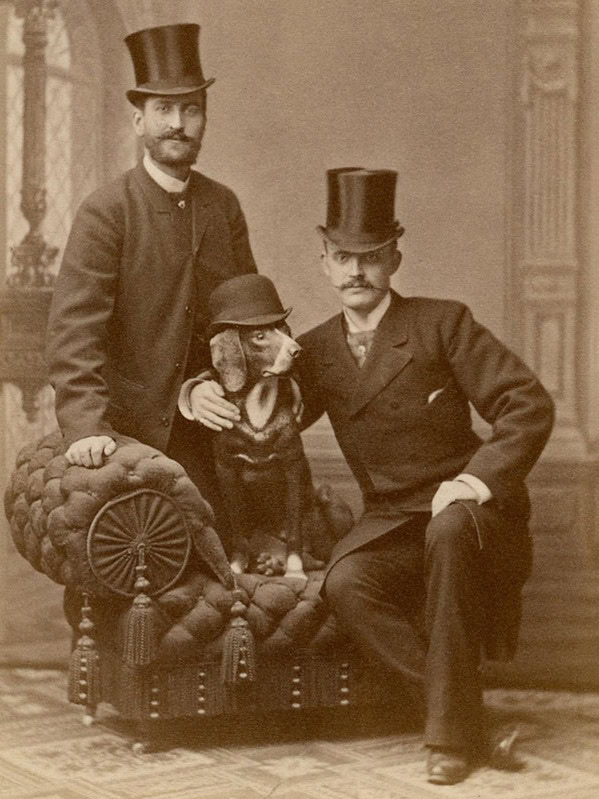
Two well-dressed gents and their equally dapper dog in Stockholm, Sweden, 1880s.
25. A Miner’s Family Living in Company Housing, 1938
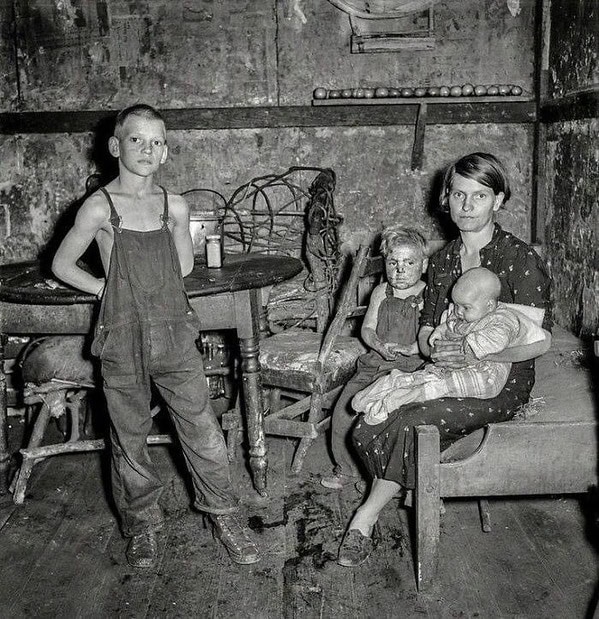
Coal miner’s wife and her three children living in a company house in Pursglove, Scotts Run, West Virginia, September of 1938.
Scotts Run, located near Morgantown in Monongalia County, West Virginia, was one of the most photographed mining regions during the 1930s because it exemplified the extreme poverty and difficult living conditions of coal-mining families at the time. The families there often lived in company houses (that were small, cheaply built) owned by the coal companies that employed the miners.
These houses were usually clustered in isolated communities where the mining company controlled not just the housing but also the stores and utilities, leaving miners’ families deeply dependent on the company for nearly every aspect of daily life.

